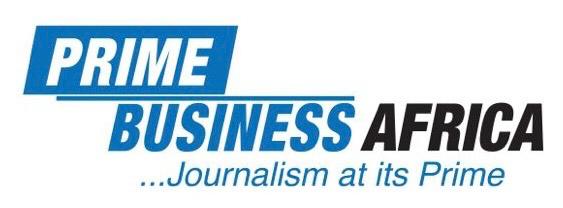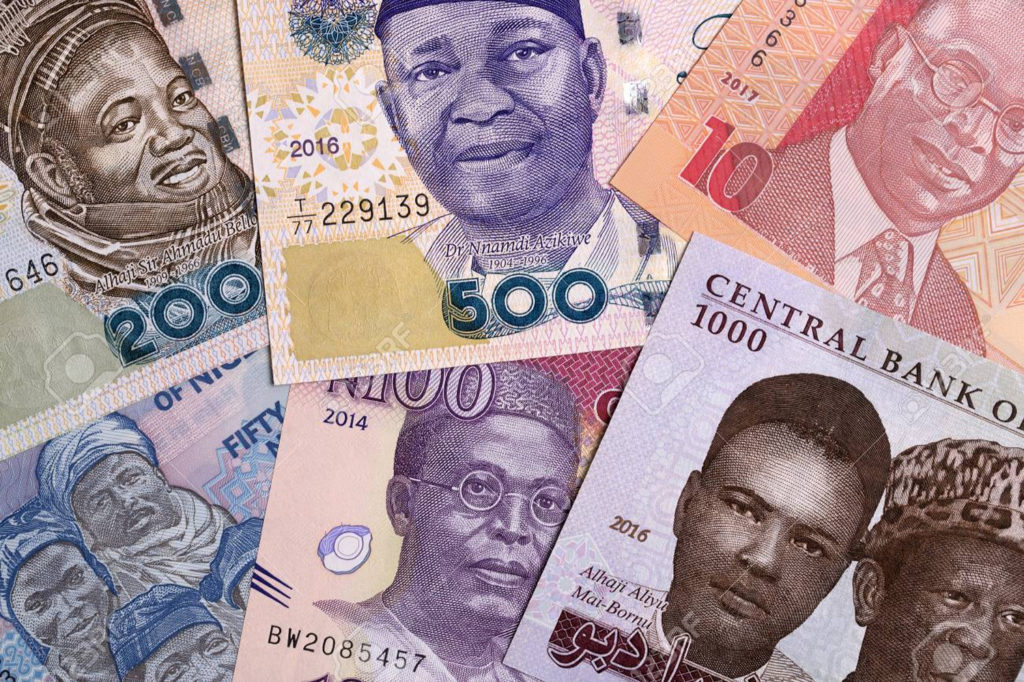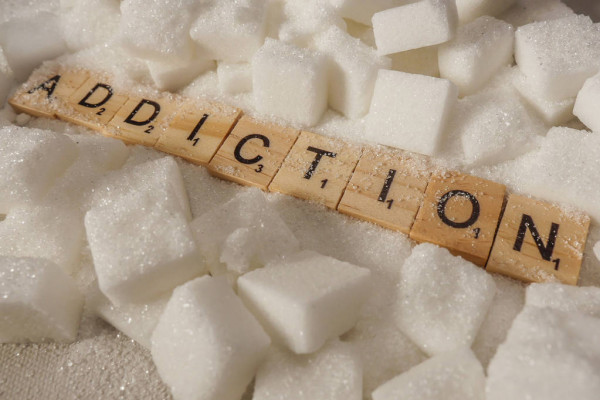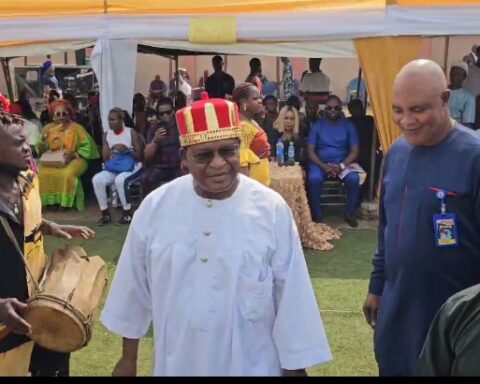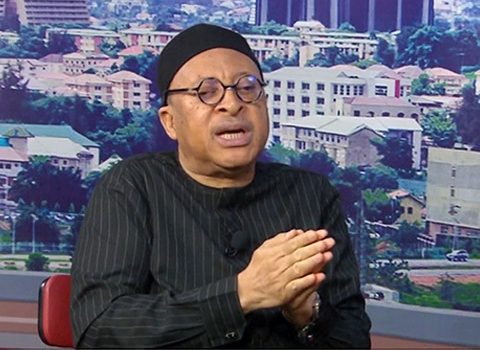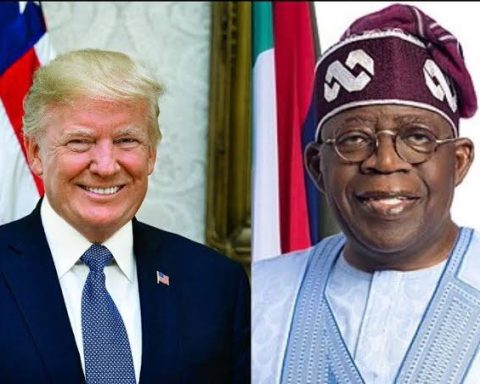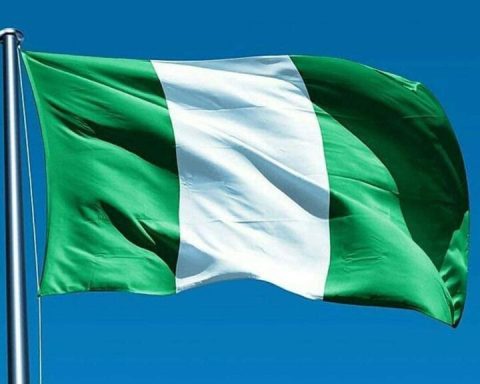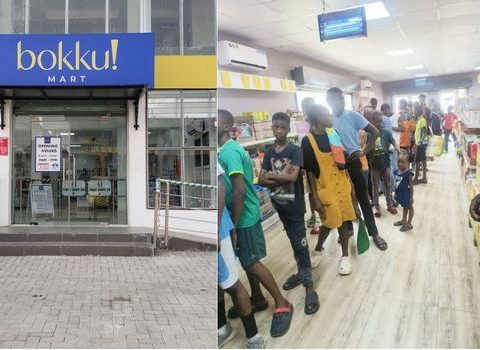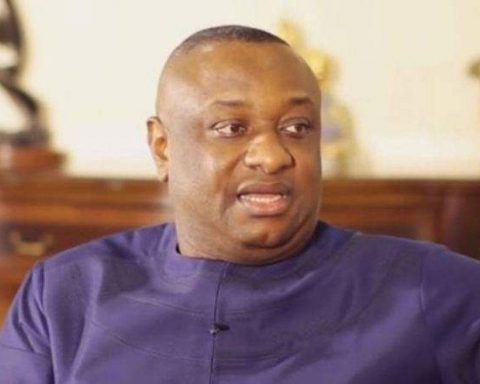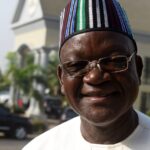In a letter to Nigerian Senate, read to the plenary session of Tuesday, September 14, 2021, President Muhammadu Buhari requested approval for external borrowing plan to finance deficit in 2021 Federal Government budget ‘through sovereign loans from the World Bank, French Development Agency, EXIM Bank and IFAD in the total sum of $4,054,476,863 and €710 million and grant components of $125 million.’
Since the request of President Buhari for the new loans, there have been so much debate about the rising debt profile of Nigeria based on the fear that it is not sustainable. Mainly informed by moral consideration of accumulating debts, which will be inherited by future generation of Nigerians, there have been media debates almost suggesting that APC government of President Buhari is impulsively taking foreign loans.
Join our WhatsApp ChannelAre loans taken by the APC led government of President Buhari unsustainable? Relative to other PDP administrations between 1999 and 2015, to what extent can it be argued that the current APC led government of President Buhari is reckless in its decisions to obtain more loans?
During the administration of former President Olusegun Obasanjo’s (1999 – 2007), external debt was reduced to $2.11 billion at the end of 2007. However, the domestic component increased from N798 billion to N2.17 trillion within the same period.
According to the Debt Management Office (DMO), the breakdown of Nigeria’s debt stock shows that $20.5 billion (about 73%) was owed to Paris Club. By 2004, the external debt stock had risen to $35.94 billion.
The negotiation eventually paid off in 2005 when Paris Club granted relief of $18 billion. By the end of 2006, the Obasanjo administration had cleared off the Paris Club’s debt. However, the country still owed $2.11 billion external debt and domestic debt was or N2.17 trillion.
Under late President Umaru Musa Yar’adua (2007 – 2011), Nigeria’s external debt increased from $2.11 billion to $3.5 billion and domestic debt rose to N5.62 trillion. Similarly, between 2010 – 2015, during the tenure of former President Goodluck Jonathan, Nigeria’s foreign debt rose to $7.3 billion and domestic debt was N7.9 trillion. By June 2021, under President Buhari’s administration, Nigeria’s external debt has risen to $28.57 billion and domestic debt was N16.02 trillion.
This means that both with respect to external and domestic debt, under President Buhari, Nigeria borrowed more. Although it is legitimate to worry about Nigeria’s rising external debt portfolio, it may be helpful to go beyond the moral debate of implications to future generations. Arguments about non sustainability based on morality will not highlight many of the core economic realities influencing government’s decision to borrow.
Debate about debt sustainability is estimated with reference to debt to Gross Domestic Product (GDP) ratio. GDP being the monetary value of goods and services produced in the country within a given year. It was the American political economists at Duke University, North Carolina, Richard Salsman, in the book The Political Economy of Public Debt – Three Centuries of Theory and Evidence, who drew attention to the fact that assessment of public debt of nations ‘differ in taxable capacities, …, the willingness of their citizens actually to pay taxes (by choosing to work, or spend, more or less), and rate of compliance.
Suppose a nation called “Reckless” has a public leverage (public debt/GDP) of 100 that’s twice that of another (at 50 percent) named “Prudence.” Which nation’s debt is less sustainable? Suppose each year Reckless routinely extracts half of national income in tax revenues while Prudence extracts only a tenth.
The public debt of Reckless is more sustainable, all else equal, despite its higher leverage, because its debt is only twice its annual tax revenues, while the debt of Prudent is quintuple its tax revenues. Reckless doesn’t look so reckless, while Prudence is far less prudent than a surface view suggests. The public debt/GDP metric is better than none but the public debt/revenue ratio better measures fiscal sustainability.’
Read also: 2023: APC’s High-profile Recruitment And Fani-Kayode’s Red-carpet Reception
So far, the debate about Nigeria’s debt is based on the absolute value of the amount Nigeria owe. Variables of both GDP and revenue are ignored in the debate. Without any doubt, some of the concerns expressed in the debate are legitimate, especially in relation to problems of exchange rate, which has further increased Nigeria’s debt burden. But in terms of looking at other critical variables such as revenue profile and even performance of the economy, the debate is excessively politicisation.
This is partly responsible for why some even suggest that compared to all previous PDP administrations between 1999 and 2015, the performance of the APC led administration of President Buhari is reckless. How correct is this assertion? In terms of both debt/GDP and debt/revenue ratios, what is the reality?
Computed at current basic prices, under former President Obasanjo, between 1999 and 2007, Nigeria’s GDP increased from N5,426.47 billion to N34,318.67. By 2010, under late President Yar’Adua, Nigeria’s GDP increased to N62,989.40 billion. In 2015, under former President Goodluck Jonathan, increased to N94,144.96 billion. At the end of 2020, under the current administration of President Buhari, Nigeria’s GDP has increased to N152,324.07.
Just looking at both the debt profiles of respective governments since 1999 as well as GDP values, debt/GDP ratio has decreased from about 22% in 1999 to about 12% at the end of former President Jonathan’s administration. By the end of 2020, under President Buhari, debt to GDP ratio has gone up to around 21%, but still less than the 22% in 1999.
Low debt to GDP ratio indicates that the economy produces and sells goods sufficient to pay back the debt. Therefore, based on Nigeria’s debt to GDP figures, arguments of previous PDP administration performing better than the current Buhari administration may appear attractive. The point however should be emphasised that although some literature suggests that debt to GDP ratio of below 60% is sustainable, the issue of assessment of performance of governments revenue in relation to debt provides a better measure of sustainability. In other words, what is the size of debt in relation to revenue, which is the point made by Richard Salsman to the effect that ‘public debt/GDP metric is better than none but the public debt/revenue ratio better measures fiscal sustainability.’
Nigeria’s total revenue in 1999 was N949.2 billion. In 2007, under late President Yar’Adua, it rose to N5,727.5 billion, in 2010, N7,303.7 billion, and in 2015, under former President Goodluck, N6,912.5 billion and in 2020, under President Buhari, N9,303.2 billion. This means that debt to revenue ratio was respectively 3.6%, 1.3%, 1.75% and 1.75%.
This means that even with the rising debt profile of the Buhari administration, the ability of Nigeria to pay back its debts is not lower than it was under former President Jonathan. Even with the worsening exchange rate reality, which on its own has further increased the Naira value of Nigeria’s debt portfolio given that under former President Jonathan, Naira was exchanging for N158 to the US Dollar.
Currently, in September 2021, exchange rate is N570. Note that the computation of both debt to GDP and debt to revenue ratios is based on the current exchange rate of N570.
Part of what is largely responsible for the lower debt to revenue ratio is the reality that under the current administration of President Buhari, Federal Government is making good progress in diversifying revenue sources. For instance, although Oil Revenue only increased from N3,830.1 billion in 2015 to N5,536.7 billion in 2019, an increase of 45%, Non-Oil Revenue increased from N3,082.4 billion to N4,725.6 billion, an increase of 53%.
For the combined sixteen years of former President Obasanjo, late President Yar’Adua and former President Goodluck, between 1999 and 2015, Oil Revenue increased from N724.4 billion to N3,830.1 billion, representing an increase of over 81%. On the other hand, Non-Oil Revenue increased from N224.8 billion in 1999 to N3,082.4 billion in 2015. Ratio of Oil Revenue to Non-Oil Revenue in 2015 was 1:1.24 in 2015. In 2019, it has decreased to 1:1.17. This implies that Non-Oil Revenue increased.
In terms of expenditure assessments, between 1999 and 2015, total expenditure increased from N947.7 billion to N4,988.9 billion. Recurrent expenditure in 1999 was N449.7 billion, which increased to N3,831.9 billion in 2015. Comparably, between 2015 and 2019, under President Buhari, total expenditure increased to N9,714.6 billion in 2019, from N4,988.9 billion in 2015. Recurrent expenditure increased to N6,997.2 billion in 2019, from N3,831.9 billion in 2015. On the other hand, capital expenditure between 1999 and 2015 increased to N8,18.4 billion, from N498 billion. Under President Buhari, between 2015 and 2019, capital expenditure increased to N2,289 billion. The overall implication of all these to government budget is that budget deficit between 1999 and 2015 increased to -1557.8 from -285.1. It similarly increased to -4820.6 in 2019.
The elementary logic is that higher budget deficits contribute to pushing governments to borrow. Applying the same logic, expectedly lower debts should encourage governments to have more favourable balanced budgets. Although following debt cancellation of more than $30 billion in 2004, under former President Obasanjo, there was reduction in budget deficit consistently, between 2003 and 2008, from -202.7, -172.6, -161.4, -100.8, -117.2 and -47.4, respectively for 2003, 2004, 2005, 2006, 2007 and 2008, however, considering lower capital to recurrent expenditure ratio, it is quite debatable whether any favorable change was achieved.
For instance, one of the expectations would have been that following the debt cancellation of 2004, government should have more revenue to put in its capital expenditure given that it has freed itself from issues of debt services and other associated costs.
Maybe, the small increases in capital expenditure to N351.3 billion, N519.5 billion, N552.4 billion and N759.3 billion respectively for 2004, 2005, 2006 and 2007 was enough to justify the debt cancellation. Or perhaps the correspondingly similar small increases in recurrent expenditure of the Federal Government during the same period to N1,110.8 billion, N1,321.3, N1,390.2 and N1,589.3 respectively, contribute to the aggregate impact that was achieved due to debt cancellation during the tenure of former President Obasanjo.
May former President Obasanjo have forgotten this very legacy of being unable to prioritise capital expenditure during his tenure, especially give the successful debt cancellation, when he recently adds his voice to those who are critising the decision of President Buhari’s administration to obtain additional debt when he argued, ‘If we are borrowing for recurrent expenditure, it is the height of folly. If we are borrowing for development that can pay for itself, that is understandable.
Then the payment, how long will it take to pay itself?.’ We may have to curious ask former President Obasanjo, when Nigeria cancelled its debt in 2004, what specifically was the objective? Shouldn’t it have been for development? The resources that were freed from debt services, which component of the Federal Government budget was it used for?
Everything considered, all the indices of Nigeria’s fiscal management between 1999 and 2020, indicates more prudence under the six years of President Buhari than during the eight years of former President Obasanjo, notwithstanding the claims of cancelling Nigerian debts. By the time the analysis is expanded to cover specific issues of projects executed, under the current administration of President Buhari, Nigerians would need help from former President Obasanjo, former President Goodluck, all PDP leaders and their supporters to highlight what specifically they were able to give Nigerians in terms of projects executed in return for their ‘prudent’ management of the national economy during their sixteen years tenure.
For instance, President Buhari is implementing one of the most ambitious National Social Investment Programme (NSIP) in the country since independence. Under the programme, with the goal of lifting 100 million Nigerians out of poverty, millions of poor Nigerians are benefiting from these initiatives. One of the components of the programme, Government Enterprise and Empowerment Programme (GEEP), N36.9 billion in interest-free loans of between N50,000 to N350,000 has been disbursed to more than 2.3 million Nigerians.
Under another component of the Programme Home-Grown School Feeding Programme, 9.9 million primary 1 – 3 pupils in 54,952 public primary schools in 35 states have benefited. Additional 107,000 cooks have been engaged. In the case of Conditional Cash Transfer, the third component, more than 3 million poor and vulnerable households have been registered on the National Social Register, out of which more than one million families are currently being paid N5,000 monthly.
In the area of infrastructure, APC led administration of President Buhari has increased annual budgetary allocation for Federal Roads to about N260 billion as against the allocation of 18 billion Naira in 2015 under PDP administration. Significantly, more resources were devoted to construction of road and transport infrastructure than any other administration since 1999, and the results are roads, bridges, highways, rail lines and stations, and air and seaport upgrades. Work has since resumed on several stalled, abandoned or solution-defying road projects that were inherited, like the Loko-Oweto Bridge, Lagos-Ibadan Expressway, Sagamu-Benin Expressway, the Enugu-Port Harcourt Expressway, Onitsha-Enugu Expressway, Kano-Maiduguri Expressway, Abuja-Kaduna-Zaria-Kano Expressway, Obajana-Kabba Road, Ilorin-Jebba Road, Apapa-Oshodi-Oworonshoki Road, and several others are in progress, with some already close to completion.
A brand-new bridge in Ikom, Cross River State, was completed, which replaced the dilapidated steel truss bridge originally built five decades ago, as was a new border bridge linking Nigeria and Cameroon, in the spirit of regional integration. Construction work on the Second Niger Bridge, a contract awarded multiple times between 2002 and 2015, under PDP administration, but constantly stalled for lack of funding, finally kicked off in 2018, with guaranteed funding, for the first time in the history of the project.
In 2017, construction finally commenced on the Bodo-Bonny Bridges and Road (linking Bonny Island to the Rivers Mainland), a project first mooted decades ago, and awarded several times without success, prior to the Buhari APC led Administration. Currently, according to the Federal Ministry of Works and Housing, there are around 900 active road contracts, covering the construction, reconstruction or rehabilitation of more than 13,000km of Federal roads and highways across the country, out of a total of 35,000km of Federal roads in existence.
In the Agricultural sector, specific initiatives of the APC led government of President Buhari include National Food Security Council (NFSC), Agriculture for Food and Jobs Plan (AFJP), National Livestock Transformation Plan, The Anchor Borrowers Programme (ABP), The Presidential Fertilizer Initiative (PFI), and Creation of an Enabling Environment. Specifically, the ABP for instance, implemented by the Central Bank of Nigeria, since 2015, provided more than 300 billion Naira to more than 3.1 million smallholder farmers of 21 different commodities (including Rice, Wheat, Maize, Cotton, Cassava, Poultry, Soybeans, Groundnut, Fish), across Nigeria, successfully cultivating over 3.8 million hectares of farmland.
The PFI has produced and delivered to the Nigerian market, over 30 million 50kg bags equivalent of fertilizer, at reduced prices; and resulted in the revival or construction of no fewer than 40 moribund fertilizer blending plants across the country. That Nigeria today has 44 functioning blending plants, with more on the way, is solely due to the success of the Presidential Fertilizer Initiative (PFI). The plants include the following:
• In 2017, the multinational group Olam invested $150 million in an integrated animal feed mill, poultry breeding farms and hatchery in Kaduna State, as well as an integrated poultry and fish feed mill in Kwara State.
• In Anambra State, the Coscharis Group began the cultivation of rice in 2016, on a 2,500 hectare farm, and soon after expanded into Milling, with the commissioning of a 40,000 MT modular Rice Mill in 2019,
• In Niger State, the BUA Group is currently completing a $300million Integrated Facility comprising a Sugar Mill, Ethanol Plant, Sugar Refinery and Power Plant, and a 20,000-Hectare Farm.
• In Kebbi State, GB Foods has invested 20 billion Naira in a Tomato Processing Factory supplied by what is said to be the single largest tomato farm in the country. Future phases of the investment will make it the largest processing facility for fresh tomatoes in sub-Saharan Africa.
• The same GB Foods in July 2020 opened its N5.5 billion Mayonnaise production facility in Ogun State, which will be supplied with input from the company’s new farms in Kebbi State.
• In Lagos, Ariel Foods FZE has recently constructed and completed the biggest Ready-To-Use Therapeutic Foods (RUTF) production facility in Africa.
• In Nasarawa State, the Nigeria Sovereign Investment Authority (NSIA) has recently completed work on the first phase of a multi-million-dollar animal feed processing facility and a backward-integrated 3000-hectare Maize and Soyabeans Farm, in a co-investment partnership with a South African Investment Group.
• In 2021, the Dangote Group commissioned its $2 billion Fertilizer Plant, with an annual capacity of 3 million Metric Tonnes, the largest fertilizer plant in West Africa. In June 2021, the plant began delivering an average of 120 trucks of Urea per week to the Nigerian market, and is also set to target the export market across West Africa and beyond.
• State Governments are also actively keying into the President’s Agriculture vision. In 2018, Cross River commissioned a 3 billion Naira Hybrid Rice Seedlings Factory, to supply rice seedlings to farmers and governments across the country.
• Lagos State is completing the 32 Metric Tonne per hour Imota Rice Mill, which, when functional, will be one of the largest rice processing facilities in sub-Saharan Africa. The Imota Rice Mill will produce 2.4 million bags of 50kg per annum, and create an estimated 250,000 direct and indirect jobs, and will plug Lagos State firmly into the national rice value chain.
• Ekiti State is reviving its Ikun Dairy Farm, in a successful partnership with Promasidor, with a production target of 10,000 Liters of milk daily.
• In Ondo State, the 9 billion Naira Sunshine Chocolate Factory – a Public Private Partnership involving the State Government – was completed and commissioned in 2020, to take advantage of the State’s leading position in the cultivation of cocoa.
Notwithstanding all these and ignoring all the years of lost opportunities under sixteen years of PDP, public debates around comparative assessments of performance of six years of APC government under President Buhari as compared to sixteen years of PDP get unfairly dominated by allegations of recklessness and incompetence. PDP may wish to go beyond the manipulative strategy to rewrite the realities of incomparable achievements of President Buhari led APC government as against all the PDP administrations between 1999 and 2015 by coming out with a clearer empirical account than can present new evidence. Otherwise, the incontrovertible evidence is that APC led government of President Buhari is in fact more prudent than all PDP governments between 1999 and 2015.
May be also, given the bullish disposition of Governor Nyesom Wike of River States in engaging economic policy debates in the country, it is important to stress the point that in addition to the requirement for honesty, PDP leaders should understand and appreciate that when issue of development is reduced to what the English Economist, Kate Raworth referred in the book, Doughnut Economics: Seven Ways to Think Like a 21st-Century Economist, as the portrait of a person ‘standing alone, money in hand, calculator in hand, and ego in heart’, initiatives of governments can hardly rise above consumption, which was the case throughout the sixteen years of PDP. Because that was the case, even when former President Obasanjo negotiated debt cancellation, rather than resulting in increased capital expenditure significantly, that didn’t happen.
Interestingly Governor Wike’s response to the decision of President Buhari’s administration to negotiate the new debt of about $4 billion was that Rivers State was discriminated against. One of the problems of bullies is the mentality of believing that they can force their way by intimidating others. Governor Wike need to accept that negotiation in a 21st-century economy doesn’t require intimidation. In addition, leaders who are committed to developing their societies would have to outgrow the doughnut mentality, which reduces every policy debate to cheap sharing of so-called resources. After all, in any case, some of the projects being executed by the administration of President Buhari such as the Bodo-Bonny Bridges and Road (linking Bonny Island to the Rivers Mainland), was decided without any pressure. Besides, how much pressure did Governor Wike had to put on the Federal Government of President Buhari to get the refund of over N70 billion for repairs on Federal Roads?
One of the issues that need to also be appreciated is that to some extent, the confidence of PDP leaders tends to be high in engaging debates around the performance of the economy because of the laid-back attitude of some appointees of Federal Government who should have been very proactive in directing public debates in the country. Many PDP leaders and their supporters are emboldened by the weak responses of designated public officers in Federal Government saddled with the responsibilities of engaging Nigerians around initiatives of government. The other challenge, which is very disturbing is issues around management of Nigeria’s foreign exchange by the Central Bank. A situation whereby the US Dollar would appear to be on a roller-coaster against the Naira is simply unacceptable. Had the Naira to US Dollar exchange rate been stable in the last two years, most of the alleged debates about so-called recklessness against the government of President Buhari would have been long settled.
Therefore, while appealing to the CBN to take every measure necessary urgently and expeditiously to stablise the Naira exchange rate, similar appeal must also be made to all functionaries of the Federal Government, especially in ministries of Finance and National Planning to provide all the intellectual leadership required to convert the false accusation that APC led government of Buhari is recklessly borrowing. Nigeria’s borrowing, both with reference to debt/GDP and debt/revenue ratio is still below the permissible economic threshold of below 60% and 46% respectively. If economic indices are the reference point in any comparative assessment of performance President Buhari led administration as compared to all the PDP administrations between 1999 and 2016, PDP leaders and their supporters cannot have any voice!
This position does not represent the view of any APC Governor or the Progressive Governors Forum
